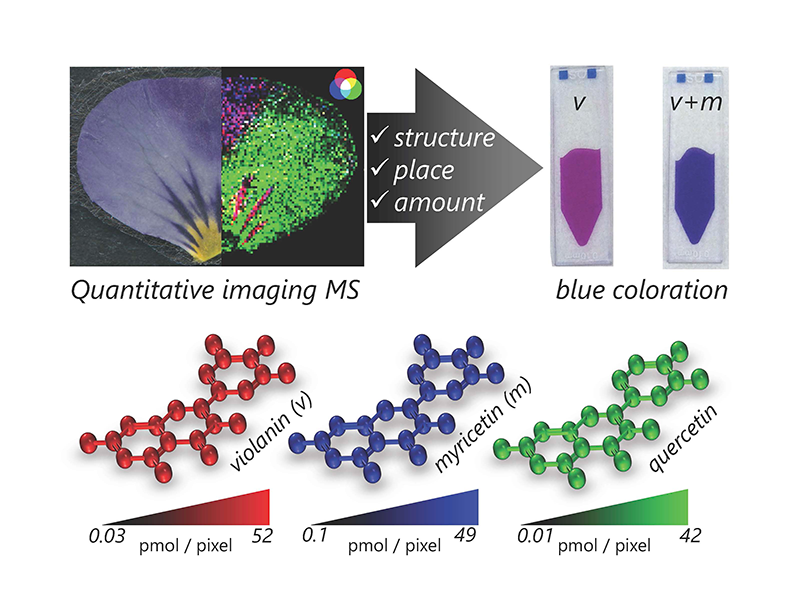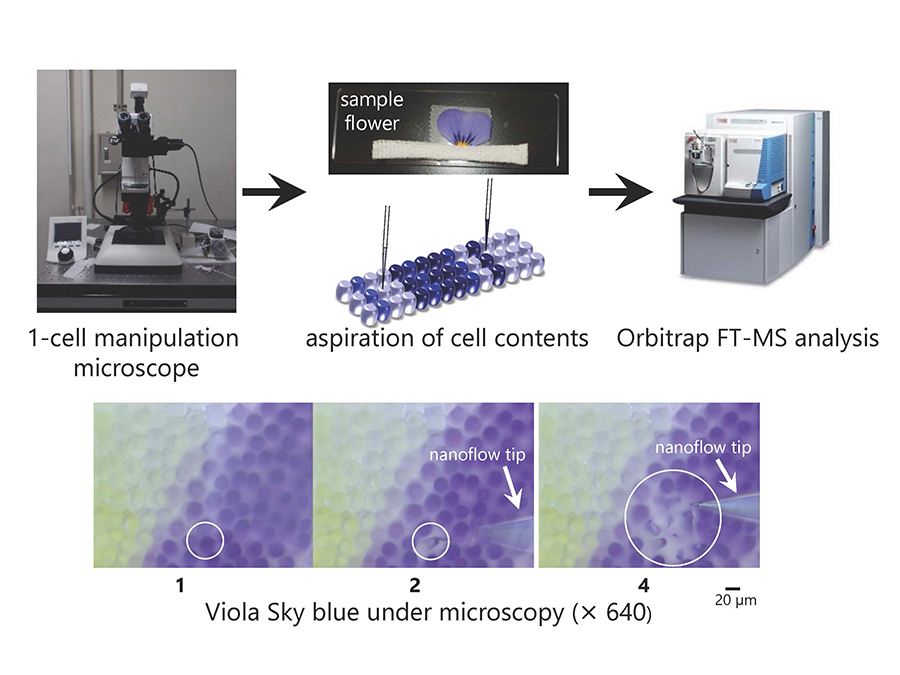Division of Molecular Biosystems
We aim to elucidate the molecular foundations of biological phenomena—either species-specific or broadly conserved—that manifest within individual organisms and across complex ecosystems. With a central emphasis on plants as both primary subjects and biological models, our research integrates genetics, biochemistry, organic chemistry, and omics sciences, while also driving innovation in analytical methodologies. By examining the intricate interactions between plants and a wide range of associated organisms and interpreting these relationships through a broad and integrative biological perspective, we seek to uncover the fundamental, unifying principles that govern life and illuminate the molecular logic behind the vast diversity of living systems.
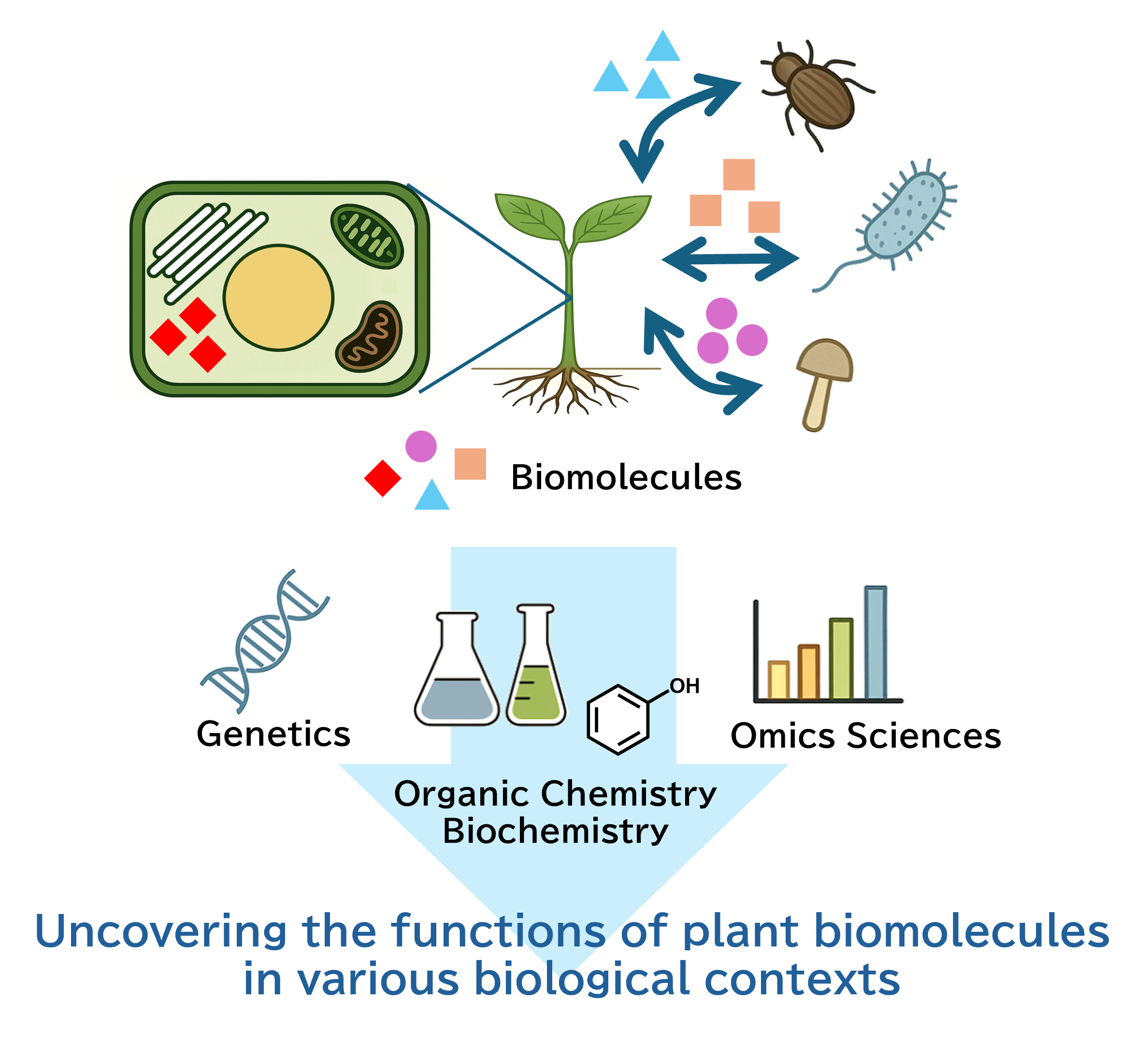
Group Members
Division of Integrative Biomolecular Function
Director/ General Manager
Fumihiko SATO
Senior Researcher/ Group Leader
Jun MURATA
Senior Researcher
Tomotsugu KOYAMA
Researcher
Tsubasa SAKAI
Technical Researcher
Takehiro WATANABE
Researcher
Kohtaro SUGAHARA
Technical Assistant
Hiromi TOYONAGA
Technical Assistant
Fumiko ISHIDA
Research Projects
1. Decoding a novel mode of chemical communication between plants and soil microorganisms
Plants inevitably encounter a wide variety of microorganisms in the rhizosphere. Recent studies demonstrate that both plant roots and soil microorganisms emit and/or secrete a spectrum of small molecules and use them to mutually affect their fitness for survival. However, the molecular mechanisms behind the interactions of plants and soil microorganisms have been characterized primarily with selected pathogens, Rhizobium, and AM fungi, and whether and how plants respond to most of the rest of soil microorganisms remains largely elusive.
Using Arabidopsis thaliana (thale cress) and Bacillus spp. as model organisms, we study (i) how bacterial volatile organic compounds (BVOC) produced by soil microorganisms affect plant growth, and (ii) how plants respond and adapt to such a stressful environment when exposed to BVOC. We found that BVOC emitted from Bacillus spp. can interfere the growth of Arabidopsis seedlings and performed bioassay-guided fractionation of BVOC for identifying the key chemical compounds that are responsible for such inhibition of plant growth. Furthermore, we observed a unique behavior of Arabidopsis seedlings upon exposure to BVOC; the seedlings communicate each other via root exudates to increase their fitness under such stressful environment. We call this novel activity that counteracts the growth inhibitory activity of BVOC as ‘resilience-inducing factor (RIF)’ and have been trying to identify the active components from root exudates.
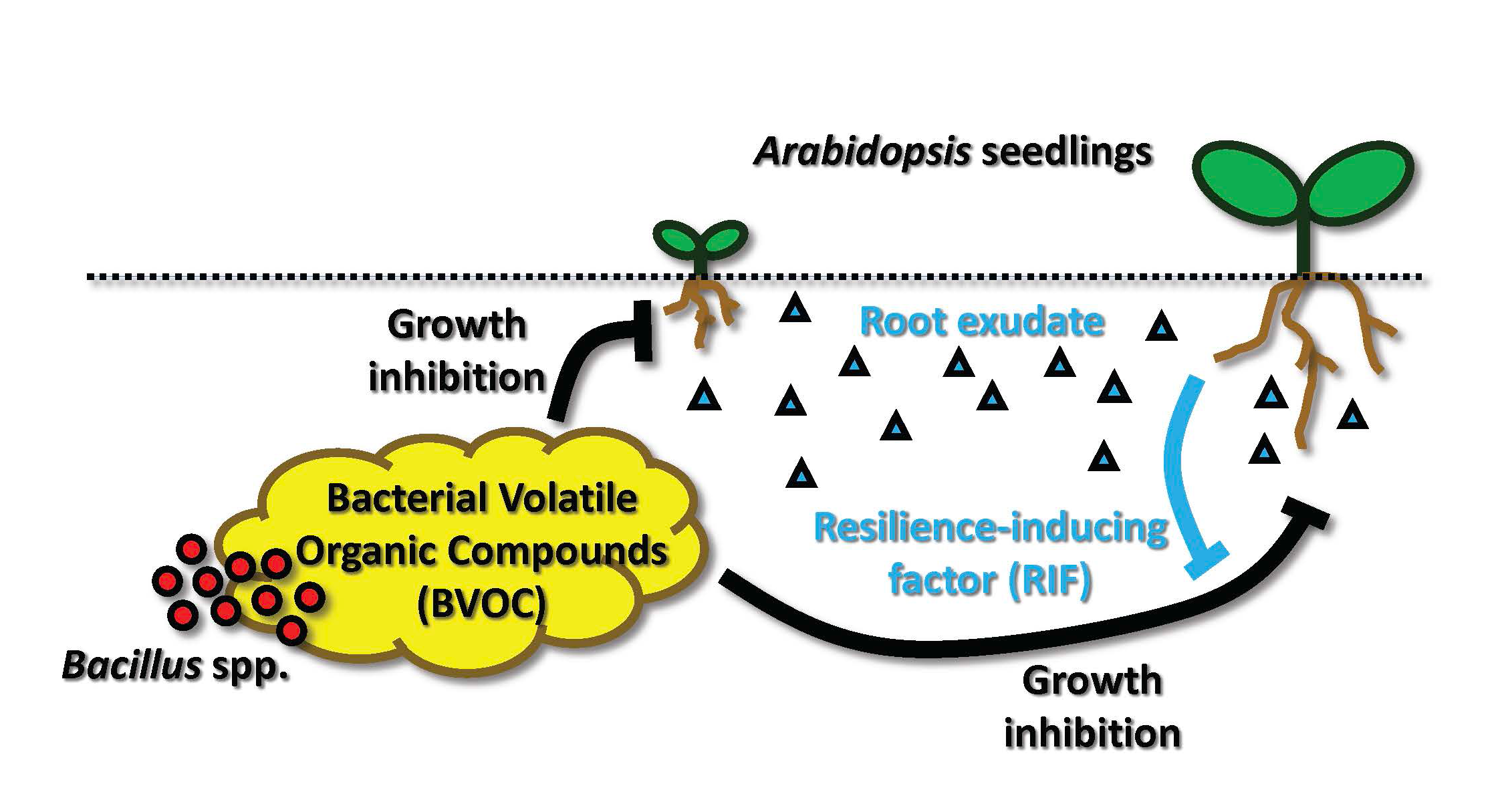
2. Analysis of the molecular mechanism of leaf development
Plants generate oxygen, fix carbon-the source of diets and fuel-and produce medicinal substances, all of which we need for our survival. Plants also provide comfort and beauty in our daily life and contribute to our high-quality lifestyle. We cannot live without plants and, therefore, must explore better ways to preserve and improve existing plants for future generations. This scientific research mainly aims to obtain a mechanistic understanding of plant development and provide technical advances in plant breeding and biotechnology to establish a future sustainable lifestyle.
Plants develop through the coordination among many processes of differentiation, morphogenesis, physiology, metabolism, senescence, and responses to environmental stress. This coordination is achieved by master regulators of plant development. Because these regulators often play pleiotropic roles in a plant’s life cycle, this research project focuses on the developmental regulation mechanism of a leaf as a model organ. A major goal of this project is to provide a framework for the coordination among individual processes in leaf development.
This project currently conducts experiments to understand the molecular mechanisms of leaf development. It focuses on the signaling pathway downstream of the microRNA-regulated transcription factors and the accumulation of metabolites. Emphasis is also placed on the genetic modification of leaves with a novel morphology.
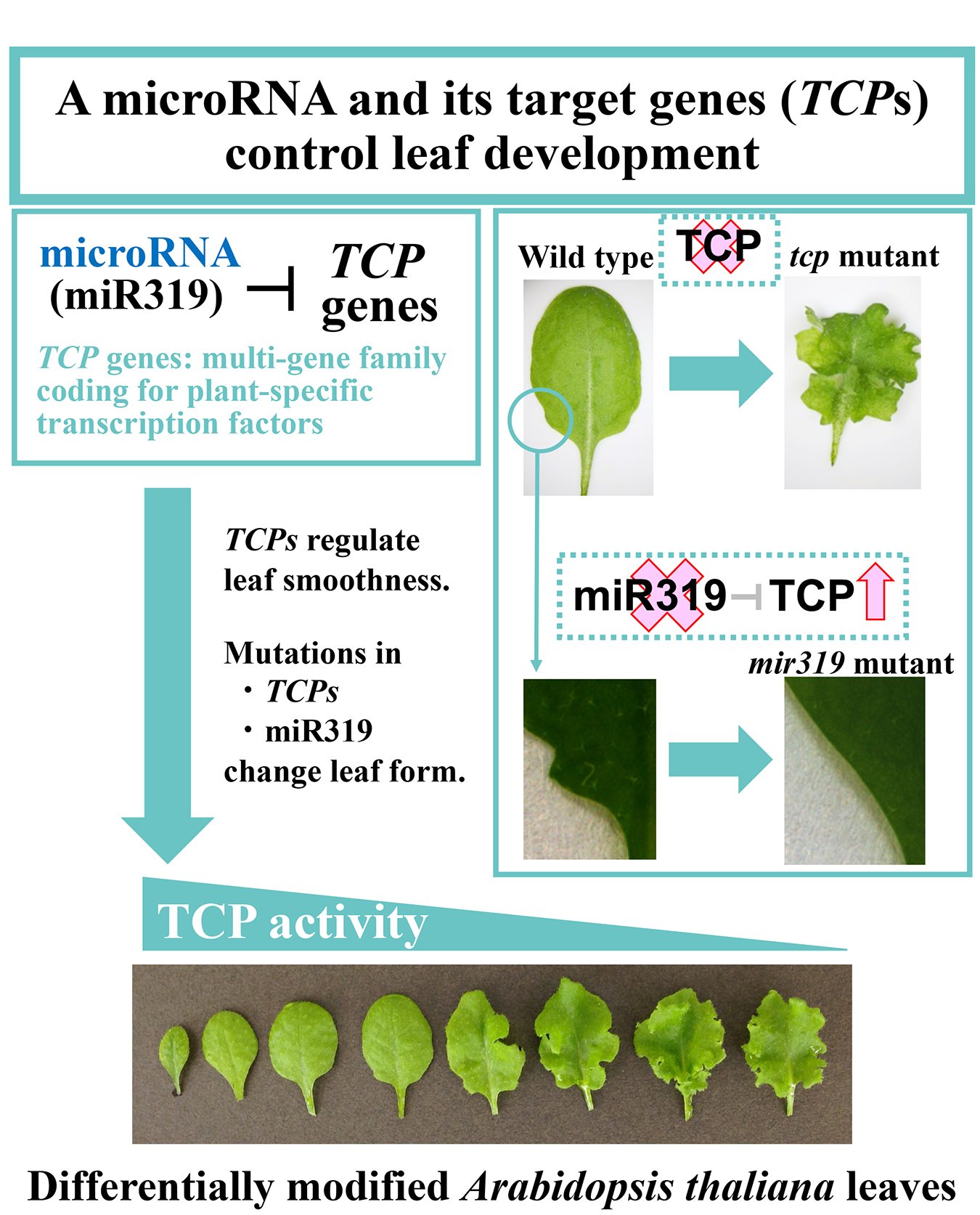
3. Space and Time-resolved Localization Analysis of Metabolites
In conventional biochemistry, current limitations in scientific and analytical methods hinder elucidating precisely the location and function of biomolecules. Recently, developments in mass spectrometry (MS) have enabled the detection and identification of metabolites and proteins. We study plant physiological phenomena and their associated molecular mechanisms on the basis of space- and time-resolved localization analysis of metabolites using MS.

Blue Coloration Mechanism in Viola Petals
Flowers have beautiful colors and striking patterns to attract insects like bees, which assist in pollination, and are an important organ for plant reproduction. Flowers contain flavonoids, which filter the strong UV sunlight for protection. We study the localization, amount, and species of flavonoids present in the pigments in petals and their growth process using imaging MS. In conventional biochemical research, because whole flowers are homogenized and the flavonoids extracted, any localization information is lost. Using the recently developed quantitative imaging MS and single-cell MS to perform space- and time-resolved localization analysis of flavonoids, we plan to reveal the physiological roles of flavonoids in plants during the growth process and coloration changes in flowers.
